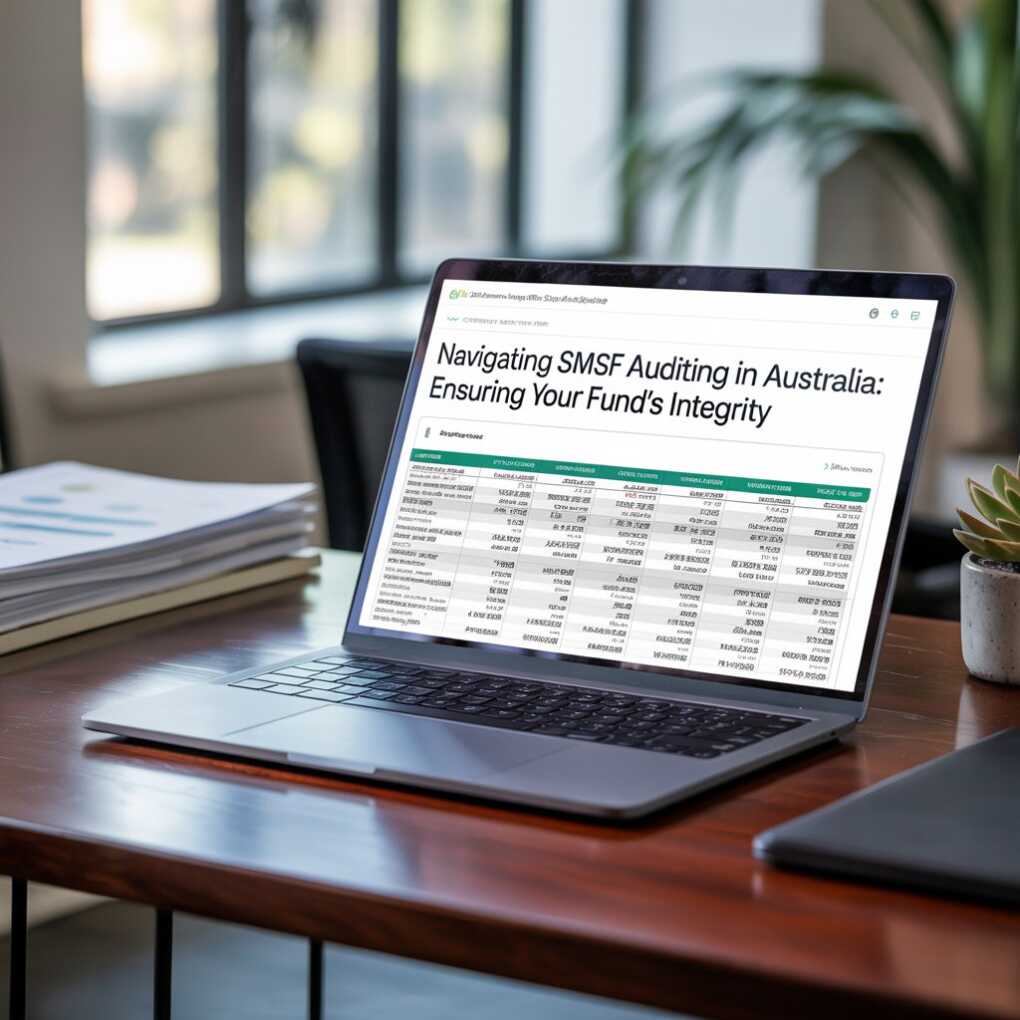Self-Managed Superannuation Funds (SMSFs) are an integral part of Australia’s retirement landscape, providing individuals with the control to manage their retirement savings. With this control comes the responsibility to adhere strictly to the ever-evolving superannuation laws and regulations. For SMSF trustees, the assurance of fund compliance is not just prudent; it is mandatory. The practice of SMSF auditing in Australia ensures that funds adhere to the regulatory standards set by the Australian Taxation Office (ATO) and the Australian Securities and Investments Commission (ASIC).

Understanding the Role of SMSF Audits
An SMSF audit is a comprehensive review of a super fund’s financial statements and operations. Conducted annually, the audit involves an assessment of the fund’s compliance with the Superannuation Industry (Supervision) Act 1993 (SIS Act) and other regulatory requirements. It must be carried out by an ASIC-approved SMSF auditor who is independent of the fund’s financial affairs to maintain objectivity and ensure credibility.
The Importance of Compliance
Compliance is the cornerstone of SMSF management. The ATO, as the main regulatory body for SMSFs, underscores the necessity for funds to operate within the confines of the law. Breaching these regulations can lead to serious consequences, including financial penalties, the disqualification of trustees, and in severe cases, the taxation of the fund at the highest marginal rate.
Choosing the Right SMSF Auditor
When it comes to SMSF auditing, selecting the right auditor is critical. Trustees should seek professionals who possess not only the necessary qualifications and approvals but also a deep understanding of superannuation legislation and auditing standards. An experienced and competent auditor will not only uncover any issues relating to compliance but can also provide valuable insights into the fund’s financial health.
Preparing for an SMSF Audit
Preparation is key to a seamless SMSF audit process. Trustees should ensure that all financial documents, member records, and minutes of meetings are accurate, up-to-date, and readily available. It is advised to establish a structured record-keeping process that will streamline the audit and prevent any unnecessary delays or complications.
Common Compliance Matters
During an audit, some common compliance matters tend to surface more frequently than others. Among these are the sole purpose test, ensuring the fund is maintained for the sole purpose of providing retirement benefits, and the in-house assets rules, which restrict the level of investment a fund can hold in related parties. Additionally, trustees must be careful of maintaining the arm’s length principle in all fund transactions to prevent any conflicts of interest.
The Auditing Procedure
The auditing procedure follows a systematic approach, which includes the examination of financial records, assessment of the fund’s compliance with the trust deed, and verification that the fund’s investments are in line with its investment strategy and SIS regulations. SMSF auditors will also scrutinise contribution and pension payments, asset valuations, and income recognitions.
Responding to Audit Findings
Post-audit, the SMSF auditor will provide a report detailing their findings. Should there be any instances of non-compliance, trustees are given the opportunity to rectify these issues. Timely and effective response to audit findings is essential to avoid penalties and to ensure the fund’s compliance in subsequent years.
Continual Legislative Changes
Navigating SMSF compliance is an ongoing task, as legislative requirements may change over time. SMSF trustees must keep abreast of the latest superannuation news, regulations, and compliance deadlines. Awareness and understanding of these changes are critical for maintaining the fund’s integrity and for making informed decisions regarding fund management.
Embracing Digital Innovation
In recent years, the use of digital technologies has been a significant development in SMSF auditing. Digital systems have introduced a new level of efficiency and accuracy in the audit process, from storing financial documents to conducting online verifications. Embracing these innovations can further ensure a fund’s compliance while simplifying its administrative workload.
Long-Term Benefits of Compliant SMSFs
Maintaining a compliant SMSF is not merely about avoiding penalties; there are long-term benefits to consider. A well-administered, fully-compliant SMSF can provide a sense of security and confidence for its members, knowing that their retirement savings are being managed in accordance with the law and are focused on achieving the best possible retirement outcomes.
Conclusion
The process of SMSF auditing in Australia is a vital element in the integrity and success of an SMSF. By ensuring compliance with the law, trustees can protect their fund from financial penalties, enhance its trustworthiness amongst members, and secure their financial well-being in retirement. Through diligent preparation, engagement with qualified auditors, and a commitment to staying informed about legislative developments, SMSF trustees can navigate the complexities of SMSF auditing and maintain the integrity of their funds effectively and efficiently.
Navigating SMSF auditing in Australia is not merely a regulatory obligation but an opportunity to safeguard and increase the soundness of one’s retirement plan. By committing to these practices, SMSF trustees can ensure that their fund continues to offer a robust and secure financial future.
